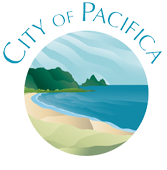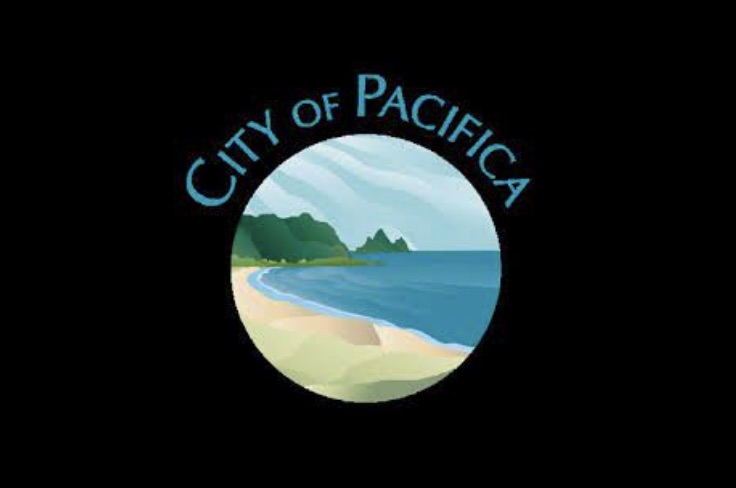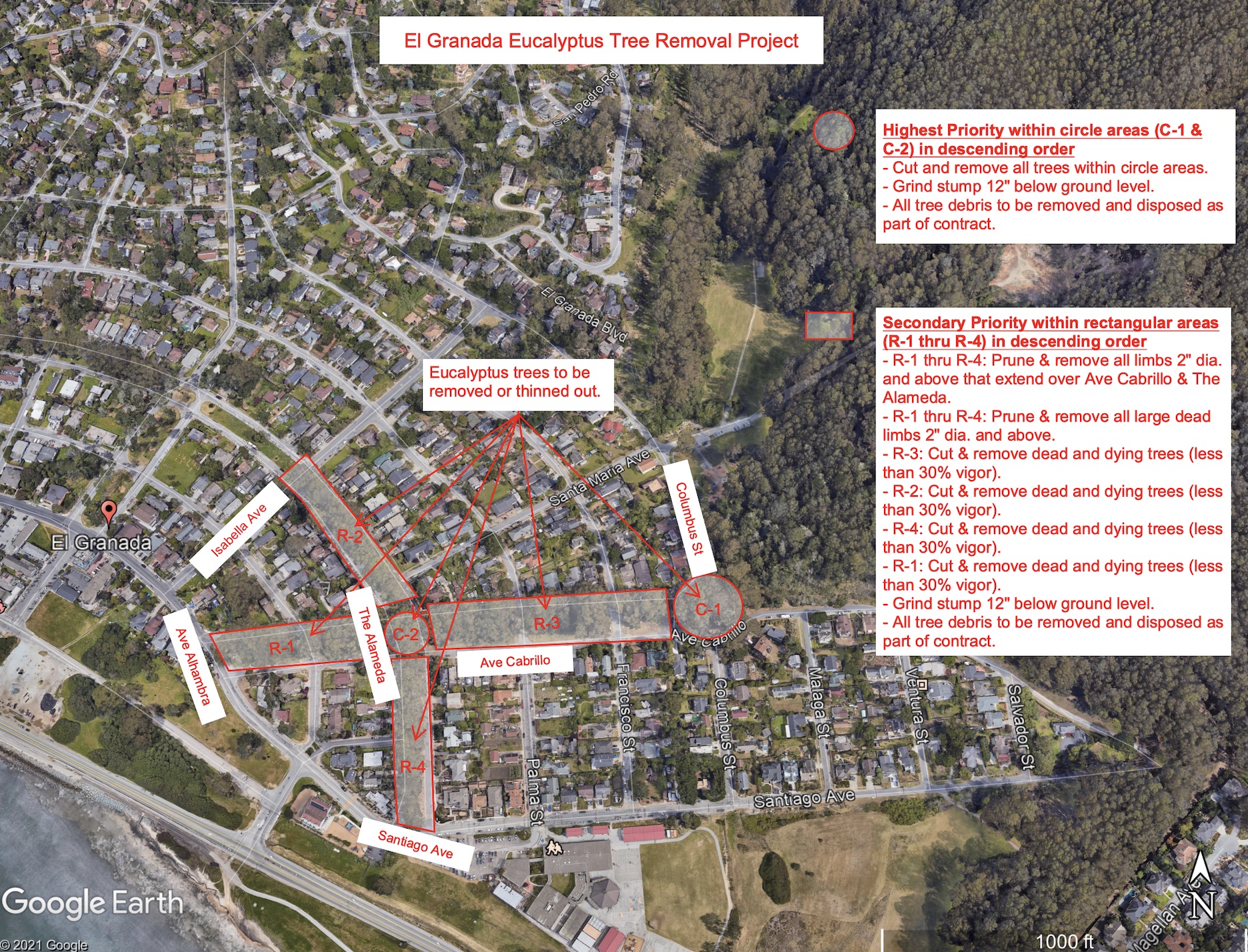|
Getting your Trinity Audio player ready...
|
 OWN VOICE. ~ InPerspective by Gregg Dieguez —
OWN VOICE. ~ InPerspective by Gregg Dieguez —
This article contains the City of Pacifica’s responses to claims made in a recent article about Pacifica’s seawall plans. In addition to this response, please refer to the City’s FAQ page for their position on a variety of related questions. This article also includes responses to concerns I raised about connection/capacity charges in this article.
Footnotes: to use, click the bracketed number and then click your browser Back button to return to the text where you were reading.
Images: Click to enlarge for improved readability in a new window.
In addition to responding on the City website under the For the Record section to some of the inaccuracies in the Coastside Buzz articles, here is some additional corrected information related to the inaccuracies in the articles and responses back to you from BWA:
1) “Outreach was done to the community within 300 feet of the Beach Boulevard, 20 people including Sharp Park community members and City Council decided the direction of the plan” also noted “20 people decided the direction”. This is incorrect, outreach was completed on a Citywide basis as follows: From October 2020 through April 2021, there were four Zoom Workshops conducted for the BBIRP that were supplemented with on-going online engagement. Workshops, and the project in general, were marketed through the following methods. Postcards for each workshop were sent to 1200 residences and businesses in the West Sharp Park area closest to the project site. Physical signage was placed along the promenade and pier abutment. Ongoing social media blasts were put out on NextDoor, Facebook, and Twitter. Major advertisements and announcements were distributed through the City’s weekly newsletter and Connect with Pacifica. The Pacific Tribune published articles regarding the project and workshops. Through all these methods, residents and stakeholders were encouraged to sign up for the emailing list that ended up with over 300 names and email addresses. The Zoom workshops were held with up to 85 attendees. These meetings were streamed live via PCTV and posted on YouTube and the project webpage. Each meeting had a post workshop survey to allow the public to continue to express comments. The City also conducted an online survey that received 830 comments via an interactive map and approximately 200 individual comments. Public opinion and input were used to shape the specifics related to presented alternatives and staff’s option recommendation to the Council.
2) “The consultant that presented to City Council on 6/9/2021 explicitly said they were given only the most favored public opinion options to consider and were not allowed to consider infrastructure relocation as an option.” This is incorrect. The coastal consultant for the project, GHD, provided big picture options to the public at the start of the public meetings. None of these options were provided by staff. They provided a “No Action” alternative that considered relocation and provided estimated costs for this.
3) “rate increase includes a $40 Million TAX on all Pacificans for the seawall we don’t get to vote on. More alarming is that the $40 Million Tax is only a small down payment on the future costs of this albatross that will eventually bankrupt the city and lay the tax burden on its citizens.” This is misleading, inaccurate and conjecture. Sewer fees are not a tax. They are fees for providing the waste water system services. There is nothing that shows building the BBIRP will bankrupt the City.
4) “not to mention the$200 Million+ that will also be necessary for sand replenishment south of the pier and bluff reinforcement north of the seawall”. This is an incorrect number. The total expected cost of sand in the chosen hybrid alternative is ~$35M, which is clearly laid out in the cost estimate in the alternative analysis.
5) “data that shows the seawall will eventually be breached with sea level rise”. The seawall design criteria includes 2 feet of sea level rise which has a 13% probability of exceedance by the end of the project useful life. Furthermore, there will be adaptation planning during the design that would allow the system to adapt if SLR outpaces current estimates.
6) “The water force will not only compromise the seawall itself but will also send added storm surge to the south, decimating the beach and undermining bluff stability for the homes north of the seawall”. The proposed project would introduce more sand in the system which would actually help adjacent areas and the proposed project condition would be no different than today if the beach nourishment wasn’t present, which does not undermine the bluff stability for the homes north of the seawall.
Additionally, below are responses back from the rate consultant, BWA [Bartle Wells Associates], to your [Ed: my] questions:
1. On page 11 of 30 you value the Collection System at $13.3M. I can cite several other agencies claiming a 2019 cost of $1.33 to $2M per mile for sewer pipes – including Pacifica’s own Collection System manager. With recent inflation, that $1.3M number from 2019 is likely now $1.6M. At any rate, the current replacement cost of 101 to 105 miles of Pacifica’s sewer pipes will certainly be over $150M. So how did you come up with the $13 million number?
We are not using replacement cost in our calculation. We used the residual value of the City’s sewer system assets based on the City’s fixed asset schedule. We escalated the value of the City’s sewer asset into current dollars and subtracted out accumulated depreciation based on the useful life of the assets.
2. On that same table, you excluded the Plant/Buildings and Equipment which process the sewage. Those assets are also part of the asset foundation New Joiners will utilize. In round numbers, Pacifica’s plant must be $100 to 150M. Can you explain why only land and collection systems are considered in your analysis?
The buildings and equipment are beyond their useful life and fully depreciated. The wastewater treatment plant is included. The equalization basin was classified as a work in process during our study and was fully debt financed, therefore we did not include it. It is industry standard practice to subtract out outstanding principal for debt financed assets in calculation of capacity fees.
3. “Anyone with a mortgage calculator can see that a 4% bond over 30 years adds 72% to the cost of each asset”.
Inflation has not been factored into this and therefore this is not accurate. The conventional way to show project cost is in today’s dollars and does not include 30 years of financing interest. Financing is an option to spread out the cost over time and pay back with inflated future dollars.
Here is the link to the FAQ on the City’s website For the Record: https://www.cityofpacifica.org/faqs/for_the_record.asp
Sincerely,
Lisa
More From Gregg Dieguez ~ InPerspective
Mr. Dieguez is a native San Franciscan, longtime San Mateo County resident, and semi-retired entrepreneur who causes occasional controversy on the Coastside. He is a member of the MCC, but his opinions here are his own, and not those of the Council. In 2003 he co-founded MIT’s Clean Tech Program here in NorCal, which became MIT’s largest alumni speaker program. He lives in Montara. He loves a productive dialog in search of shared understanding.






